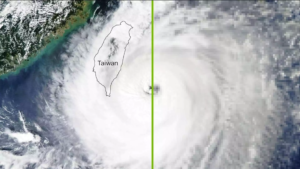Taiwan’s AI tech predicts tropical storm Bebinca’s path with precision

As Tropical Storm Bebinca approaches Taiwan, the country is using AI to improve the accuracy of its typhoon forecasts. Taiwanese meteorologists have improved their ability to forecast storm patterns by using AI models driven by technology from businesses such as Nvidia. This allows for better preparation and response. This method has previously demonstrated success in predicting the direction of Typhoon Gaemi earlier this year.
The AI models outperformed traditional approaches, offering accurate estimates up to eight days ahead. As Bebinca advances toward northern Taiwan, it is predicted to come close to the island between September 15 and 16, but the odds of direct impact are slim. However, as the storm approaches, northern and eastern coastal areas may see severe gusts, large waves, and intermittent rain.
These advances in AI-based weather prediction mark a big step forward for Taiwan’s disaster readiness, as it continues to endure regular typhoons.
Artificial intelligence-based weather models have exceeded traditional approaches by accurately predicting storm routes and intensity days in advance. In the example of Typhoon Gaemi in July 2024, AI techniques accurately forecast its route eight days before landfall, outperforming conventional predictions. This achievement encouraged the adoption of AI technology for storm tracking, including Tropical Storm Bebinca, which is expected to pass near to northern Taiwan in mid-September.
Taiwan’s AI technology is powered by advanced software from prominent tech companies such as Nvidia. With the help of Taiwan’s semiconductor sector, mainly TSMC (Taiwan Semiconductor Manufacturing Company), these AI systems analyze huge volumes of weather data and model likely storm routes. By analyzing this data faster and more efficiently than traditional techniques, AI can provide more trustworthy and timely forecasts, providing critical insights into potential consequences.
According to meteorologists from Taiwan’s Central Weather Administration (CWA), the AI system improves accuracy and confidence in predicting storm routes like Bebinca’s. This technology examines elements such as wind speeds, air pressure, and previous typhoon data, allowing forecasters to make adjustments based on real-time conditions.
